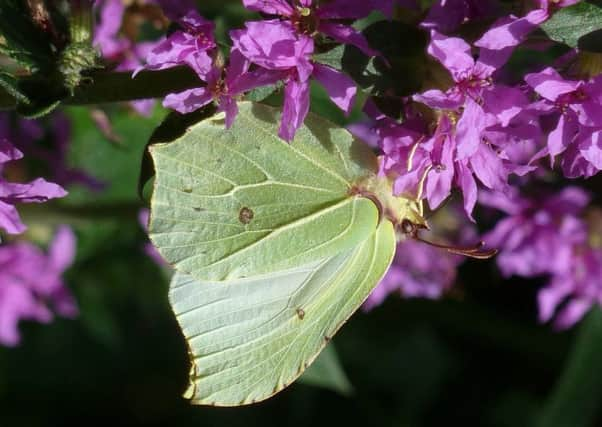Comforting signs of spring emerge after Yorkshire snow storms


There was no better demonstration of this at the end of last week than my encounter with a beautiful sulphur-yellow brimstone butterfly fluttering along a hedgerow in Wharfedale.
The sun that so swiftly melted the thick white blanket which smothered the area the previous day had also woken up this male brimstone from its winter hibernation among the leaves of evergreens like holly and ivy, or sometimes in brambles, and sent it in search of its main food source, buckthorn leaves. Those yellow wings, incidentally, are the reason for the very name “butter-fly”.
Advertisement
Hide AdAdvertisement
Hide AdBrimstones are usually among the first lepidoptera to emerge in spring, and this year the earliest was spotted in Hampshire on January 5th. For me, though, the butterfly year did not kick off until mid-February with a red admiral sun-bathing on a boulder below Baildon Moor, followed a few days later by a small tortoiseshell on some young nettle shoots beside the Leeds-Liverpool Canal.
On the same day, a queen bumblebee came into the garden but sadly found nothing worth lingering for and was last seen heading in the direction of next door’s aconites.
My first curlews of 2018 were heard crying above Baildon on February 26th, and a few days later a lapwing went barmy as I walked along the edge of the nearby golf course, as though getting in some practice for when it has a nest to protect and tries to lure intruders in the opposite direction.
To complete the roll call of wading birds arriving to breed, I have also now seen golden plovers on Burley Moor, oystercatchers in fields near the Airedale town of Silsden and, last Sunday, my first common sandpiper on the River Wharfe near Linton Falls.
Advertisement
Hide AdAdvertisement
Hide AdAny day now I am expecting to hear my first chiffchaff, the summer visiting warbler that has really increased in numbers over the last decade. They have already started appearing in Yorkshire, with one seen at South Elmsall on Sunday and another heard singing the same day at Nosterfield Nature Reserve near Masham.
Other early sightings have been sand martin, wheatear and ring ouzel.
Over on the coast, a friend reports that plenty of gannets were back on the ledges of Bempton Cliffs this weekend, while on the sea below rafts of razorbills were sitting with small groups of kittiwakes. Just a few guillemots were evident, and so far no puffins could be seen, but that will change in the next couple of weeks.
After seeing the brimstone butterfly, the most gladdening spring sight for me was near Grassington and my first primroses (the Latin name prima rosa means first flower of the year). With another cold spell and potentially more snowfall predicted for this weekend, it is a comforting thought that cowslips, bluebells and red campion are also on their way.